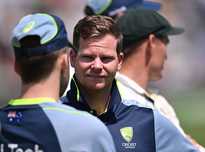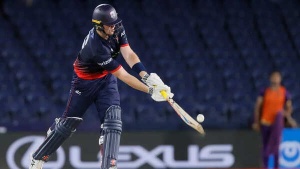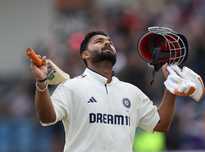Indian cricketer Suryakumar Yadav recently underwent surgery in Europe to address a sports hernia. The 34-year-old batsman shared an update on his Instagram, stating, "Life Update : Underwent surgery for a sports hernia in the lower right abdomen. Grateful to share that after a smooth surgery, I’m already on the road to recovery. Can’t wait to be back." But what exactly is a sports hernia, and how does it differ from a regular hernia? Let's take a closer look.
A sports hernia, also known as athletic pubalgia, is a painful injury affecting the soft tissues in the lower abdomen or groin area. Unlike a traditional hernia, a sports hernia doesn't present as a visible bulge. Instead, it involves a tear or strain of muscles, tendons, or ligaments in the groin region. This leads to persistent pain that intensifies with sudden movements.
Athletes like Suryakumar Yadav, who participate in sports that demand sudden changes in direction, twisting motions, or intense forceful movements, are particularly susceptible to sports hernias. These activities can include batting, fielding, soccer, football, hockey, and wrestling.
Unlike an inguinal hernia, where an organ or tissue protrudes through a weakened muscle, a sports hernia involves a tear or weakness in the muscles or tendons without a visible bulge. This makes diagnosis challenging, but the condition causes significant pain and discomfort, particularly during physical activity.
The primary symptom of a sports hernia is pain in the groin or lower abdomen. This pain may appear suddenly at the time of injury or develop gradually over time due to repetitive movements. Key symptoms include:

Due to the absence of a bulge and the pain spreading across a wide area, pinpointing the exact location of the hernia can be difficult. Stiffness and soreness after sports or exercise may also occur, hindering athletic performance.
Sports hernias are caused by repetitive movements that strain the muscles and tendons in the lower abdomen and groin. The injury occurs when these soft tissues are stretched or torn due to sudden twisting of the pelvis.
Common causes include:
Treatment for a sports hernia varies depending on the severity of the injury. Potential options include:
Avoiding activities that trigger pain, especially twisting and sudden movements, is crucial for allowing the tissues to heal. However, this process can be lengthy.

A structured rehabilitation program focuses on strengthening the abdominal and hip muscles, improving flexibility, and correcting muscle imbalances. Physical therapy is often the first line of treatment.
Nonsteroidal anti-inflammatory drugs (NSAIDs) can help alleviate pain and inflammation, although they do not address the underlying issue.
If symptoms persist despite conservative treatment, surgery may be necessary to repair the torn tissues. Surgical options may involve repairing or reinforcing the damaged tendons and muscles around the pubic bone. Surgery typically leads to a successful recovery and a gradual return to sports.
Newer articles
Older articles
 Smith Eyes Grenada Test Return After Injury Recovery
Smith Eyes Grenada Test Return After Injury Recovery
 Google Maps Boosts Navigation Precision with Fused Orientation Provider Update
Google Maps Boosts Navigation Precision with Fused Orientation Provider Update
 Earth Sciences Minister Rijiju Expresses Frustration Over Atos Supercomputer Delay, Jeopardizing Weather Forecast Upgrades
Earth Sciences Minister Rijiju Expresses Frustration Over Atos Supercomputer Delay, Jeopardizing Weather Forecast Upgrades
 Washington Freedom Snatch Last-Ball Win Over Knight Riders in MLC Thriller; Playoff Hopes Soar
Washington Freedom Snatch Last-Ball Win Over Knight Riders in MLC Thriller; Playoff Hopes Soar
 East Africa Rift: Mantle Upwelling Drives Birth of New Ocean, Study Finds
East Africa Rift: Mantle Upwelling Drives Birth of New Ocean, Study Finds
 Colon Cancer: Don't Ignore These 5 Subtle Warning Signs
Colon Cancer: Don't Ignore These 5 Subtle Warning Signs
 Prasidh Krishna Vows to Sharpen Bowling After Costly Leeds Performance
Prasidh Krishna Vows to Sharpen Bowling After Costly Leeds Performance
 Gavaskar Urges India to Replace Thakur with Yadav for Second Test Against England
Gavaskar Urges India to Replace Thakur with Yadav for Second Test Against England
 Rishabh Pant's Unconventional Batting Style Is Revolutionizing Cricket, Says Greg Chappell
Rishabh Pant's Unconventional Batting Style Is Revolutionizing Cricket, Says Greg Chappell
 Vitamin B12 Deficiency: Cardiologist Explains Symptoms, Sources, and Why You're Always Tired
Vitamin B12 Deficiency: Cardiologist Explains Symptoms, Sources, and Why You're Always Tired